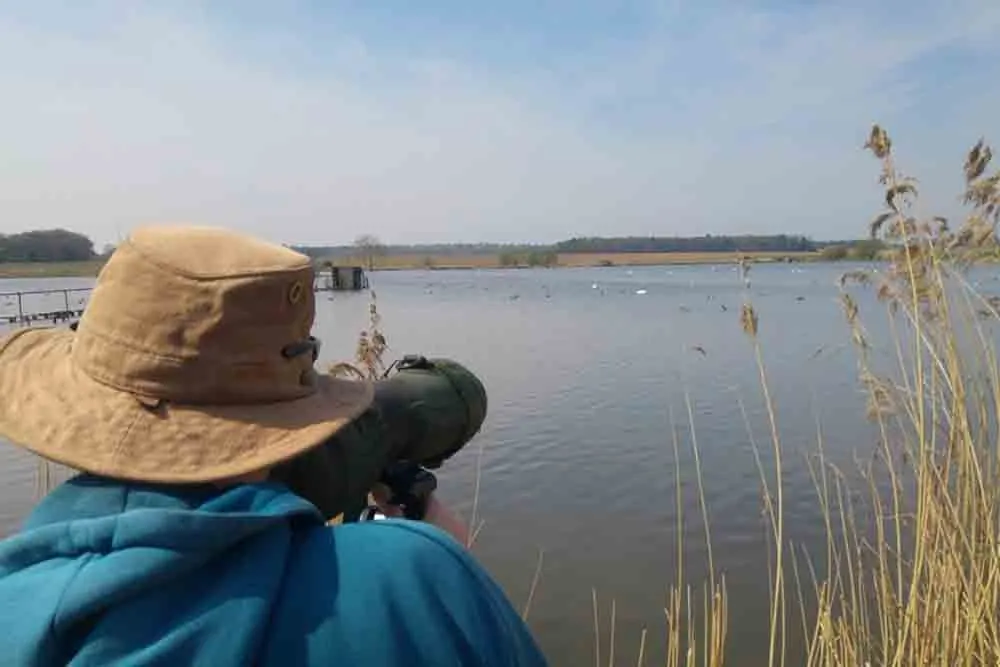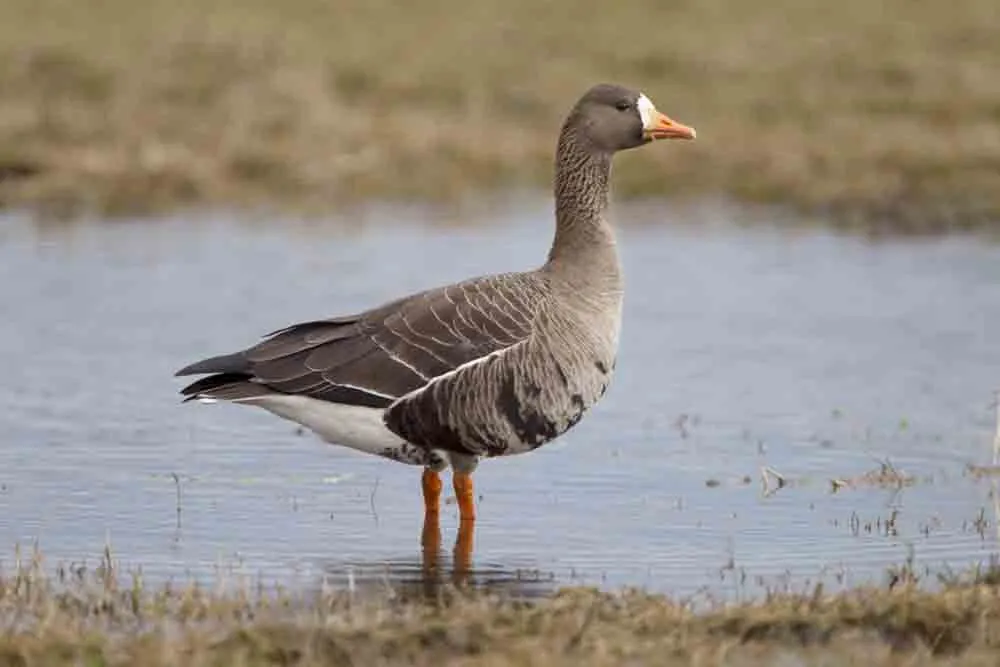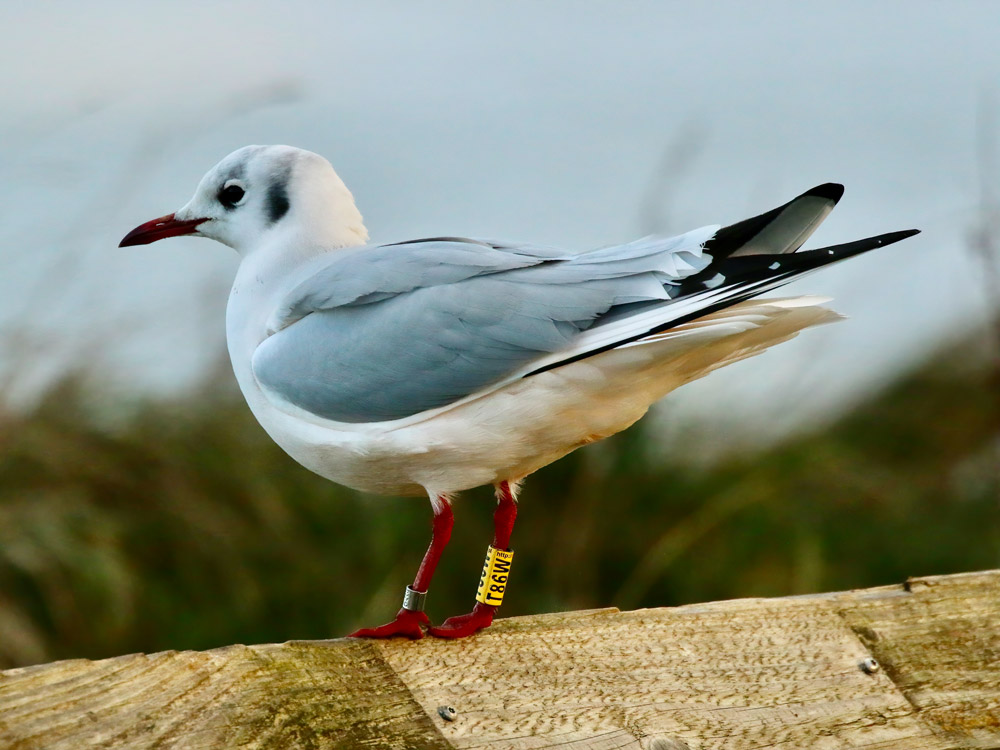You can help us tackle the challenge of avian influenza and support vulnerable bird populations.
Learn more about volunteering for a survey, reporting ringed, dead, or sick birds, and donating to our avian influenza appeal.
Volunteer for a survey and collect vital data
By taking part in a survey, you can help us collect the data which underpins our research. The information that continued monitoring provides is crucial for us to understand how birds are being impacted by high pathogenicity avian influenza (HPAI).
The power of these datasets to support conservation efforts stems from the fact that volunteers have operated continuously for a very long time.
Even a short disruption or geographical gaps in data can have significant impacts on the datasets’ value, particularly if it happens at a time when survival rates are declining rapidly due to a virus.
Wetland Bird Survey
Identify and count waterbirds at wetland sites, from lakes and rivers to estuaries and coastal mudflats.

Goose and Swan Monitoring
Help us monitor the abundance and breeding success of the UK’s native geese and migratory swans.

BirdTrack
Report sick or dead birds to BTO and give us real-time information about the avian influenza outbreak.

Report ringed birds
Our scientists are using data generated by the British and Irish Ringing Scheme to help us understand the impacts of avian influenza on bird populations.
Live birds with rings
 If you see a live bird with a ring, you may be able to read and report the ring’s unique code. Resightings of live ringed birds will help researchers predict how populations might fare in the future.
If you see a live bird with a ring, you may be able to read and report the ring’s unique code. Resightings of live ringed birds will help researchers predict how populations might fare in the future.
Some ringing projects use colour rings, which are easy to read when in the field. Colour rings are most often used on species like gulls, wildfowl, seabirds and waders, all of which have been badly affected by the outbreak.
Record the code on the colour ring and the placement and colour of all the rings on the bird. For example, this Black-headed Gull has a metal ring on its left leg and a yellow ring with black lettering on its right leg. Both are below the ‘knee’.
- You don’t need to be able to see the number on the metal ring if you can read the colour ring code.
How to report a bird ring
- You can report information about a ringed bird to EURING.
- Don’t forget you will also need to record the species, if you know it, and the location and the date of your sighting or finding.
Report sick or dead birds
Many thousands of birds die every week of natural causes, so it is not unusual to find dead individuals occasionally. However, during an outbreak of avian influenza, reporting sick or dead birds helps us track the spread and impact of the virus.
- Experts advise that you avoid handling these birds with bare skin.
Dead birds with rings
Recoveries of dead ringed birds have been used during the current outbreak to identify affected populations, and provide an initial indication of changes to mortality rates.
If you find a dead bird, and you feel comfortable doing so, you can check the bird for a ring by using a stick or the plastic bag technique: invert a plastic bag over your hand and pick the bird up in the plastic.
Record the number of the metal ring, draw the bag over your hand, tie it up and dispose of it in your usual household waste. Wash your hands with soap and water.
You can then report the ring number to EURING.
- Experts advise that you avoid handling these birds with bare skin.
How to report a sick or dead bird
- In England, Scotland and Wales report dead wild birds to Defra for possible testing.
- In Northern Ireland report dead wild birds to DAERA for possible testing.
- In all UK regions, also report the dead bird to BirdTrack for monitoring purposes, if you know the species.
Donate to our Avian Influenza Appeal
With your support, we can help devastated bird populations recover.
Appeal donations have already helped us to:
- Collate a range of datasets and report on mortality for different species
- Produce scientific papers about our species vulnerability analysis
- Conduct an analysis of ringing data to assess mortality
- Model the potential long-term impacts on seabirds
But there is much more to do. With your donation, we can continue to fight back and help our devastated bird populations recover.
